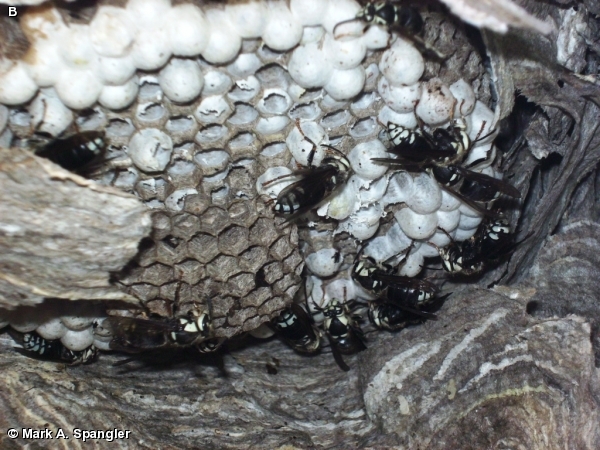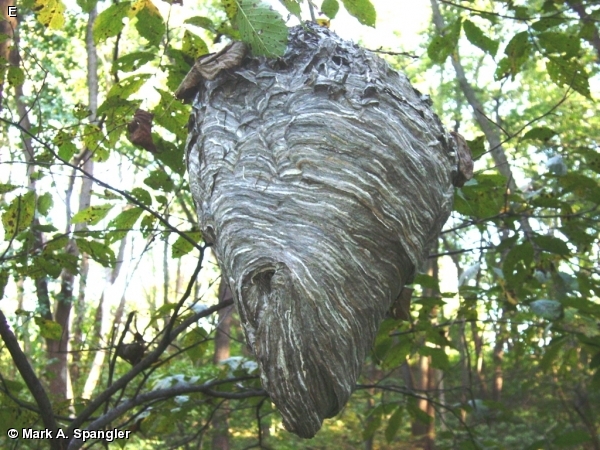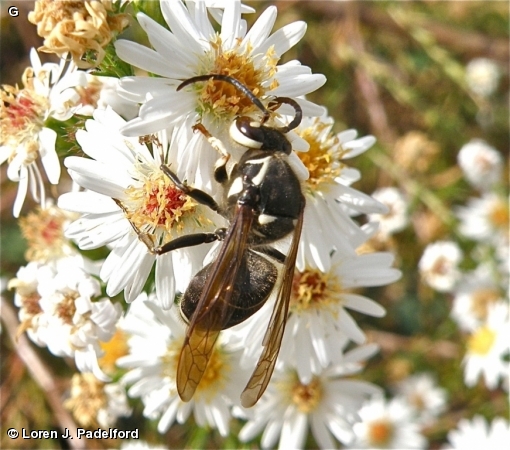
The Bald-faced Hornet is approximately 5/8 inch or 17 mm (workers and males) to 3/4 inch or 20 mm (queens) in length. It is all black with white to pale yellow markings on the face and thorax. The first 3 segments of the abdomen are plain black, and the last 3 segments have extensive white markings. The wings are clear brown. The antennae are black. There is sexual dimorphism, with males having longer antennae (13 segments to 12 in females) and longer abdomens (7 segments to 6 in females).
The frequency of occurrence is not known. A hive with wasps was photographed in fall at Neale Woods and a male was photographed at Fontenelle Forest in late October. The queen emerges in spring, followed by workers which live until late fall. Males and new queens appear in late summer and fall. Only the queen survives the winter. Adults visit flowers for nectar or aphid colonies for their honeydew.
Bald-faced Hornets are in the subfamily Vespinae and are actually Yellowjackets. Paper nests are built above ground, usually high in trees (photo E), and are not reused the next year. The larvae are fed pre-chewed insects by the adults. Although hornets will sting if the nest is disturbed, they are beneficial species that kill large numbers of insects, especially flies. A special thank you to Mark Spangler, an Educator at Fontenelle Forest, who went beyond the call of duty to shoot the series of photos A-E.
The content of NatureSearch is provided by dedicated volunteer Naturalists of Fontenelle Forest who strive to provide the most accurate information available. Contributors of the images retain their copyrights. The point of contact for this page is: Loren Padelford.








